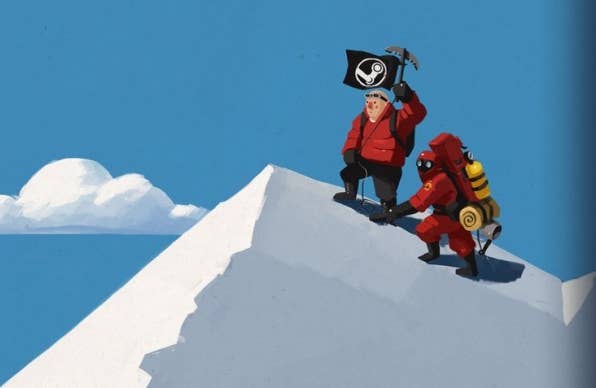How to price your game and thrive during Steam sales
Experienced developers and Valve discuss Steam sales strategies, how to approach discounts, and how to nail your pricing
If you're an independent developer who prefers a premium business model, there's an excellent chance that your business is built around Steam.
Our GamesIndustry.biz Academy guides to Steam tackle every aspect of publishing on Valve's platform, from pre-launch to later periods of your release cycle, direct from developers and Valve itself. You can read them all on this page.
How to price your game and how to approach sales on Steam are two closely related topics. As a game studio publishing on Valve's platform, a large portion of your revenue is going to be made through discounts. Such a big portion in fact, that your game should be priced specifically with this in mind.
"The Steam seasonal sales are the things which get PC players excited"Simon Byron, Curve Digital
Here, we'll explore the link between price and discounts, as well as everything you should take into account when you decide how much your game is worth on Steam. We'll also look into the strategies you can apply when Steam's famous big sales are around, as well as how to approach discounts in general.
"Without doubt, the Steam seasonal sales are the things which get PC players excited -- you only need to look at the feverish activity if a sale date leaks," says Simon Byron, publishing director at Curve Digital. "But the store does give huge flexibility to provide 'self-service' discounts outside of these, and they can be valuable when they are well timed."

Valve's Tom Giardino points out that big events such as the Steam Summer and Winter Sales are valuable to players and developers in multiple ways.
"Players congregate and re-engage with friends on Steam," he says. "Developers get their games in front of gamers actively shopping for deals. And these big events generate millions of first-time customers.
"There is no single correct discounting strategy"Tom Giardino, Valve
"There is no single 'correct' discounting strategy. Developers make all the pricing decisions on Steam, and we have seen them achieve success with wildly different strategies. Some very successful games on Steam have never even run a discount. Others have found success via more aggressive, early price reductions. For a developer's own decision making, we recommend thinking about discounts as one of many tools to bring in new players.
"One thing we see every year, which often confounds press and publishers, is popular full-price games holding their own on the Top Sellers list during a big sale event. Price cutting isn't a prerequisite or guarantee of success. It's cliché but true that building and supporting a great game is going to be a lot more important than the decision to offer 20% versus 25% off during a sale."
But before we dive in these different strategies and opportunities, Byron prefaces the discussion with one golden rule when it comes to Steam seasonal sales.
"The biggest implication generally for Steam sales is not to launch a new game anywhere remotely close to them -- sales dive a couple of weeks before and after as consumers mentally prepare to empty their wallets when the sale starts."
Don't forget that if you have any practical questions about pricing or sales, you'll find most of the answers on Steamworks, which is also where you can manage your own Steam discounts when they happen.

How to choose a price for your game on Steam
- Your price is higher than you think
Knowing how to price your game for Steam, especially as a new developer, can be an ordeal. Even having spent years on a game, many young developers tend to believe their product should be cheap. And that's a mistake. The answer to the question: 'how to price my game' is: higher than you think, No More Robots' founder Mike Rose believes.
"A lot of people just price their games too low," he says. "I've always thought [Lucas Pope] priced Papers, Please way too low. $10 is absolutely ridiculous for a game [like that] -- that game is a $20 game."
Michael Schade, CEO of Everspace developer Rockfish Games, agrees that your price has to be as high as possible.
"If nobody complains about your price, you're too cheap"Michael Schade, Rockfish
"If nobody complains about your price, you're too cheap. Instead of binge watching Netflix, watch every talk from Simon Sinek -- this will help you to understand how to sell your product, and how you build a successful business in the long-term.
"What I learned from him is something called the diffusion of innovation. Basically, he says that every product, in every market, is a bell curve. You have your early adopters, the early majority, and the late comers. And it doesn't make sense to use the same kind of marketing, the same message to sell to everybody. Especially not at the same time.
"You need to address your marketing to the [early adopters]. Especially as an indie. Then [the early majority] will buy your game when others buy it and tell them about it. So when the game comes out, the price, to a certain degree, doesn't matter. It's gonna be your biggest fans who buy the game, support you, and they don't care if it's $15, $20 or maybe even $25."
- Take Steam sales into account
The main reason your price should be high, especially on Steam, is that sales are going to be important for driving revenue after launch, and if your game is priced extremely low you're going to make less money once a discount has been applied.
"Even before you launch a game you need to think about the promotional spikes which form part of the natural sales cycle, and what your players will be paying at key discounts," Byron says.
"While protecting price is important, the truth is that shallow discounts after launch tend not to move the needle much, so in order to convert some of the post-release wishlists into sales you will usually need to be at least 33% off, with 50% proving a genuine tipping point. With that in mind, your full suggested retail price will need to take into account these discounted sales, so do price that in at the start."
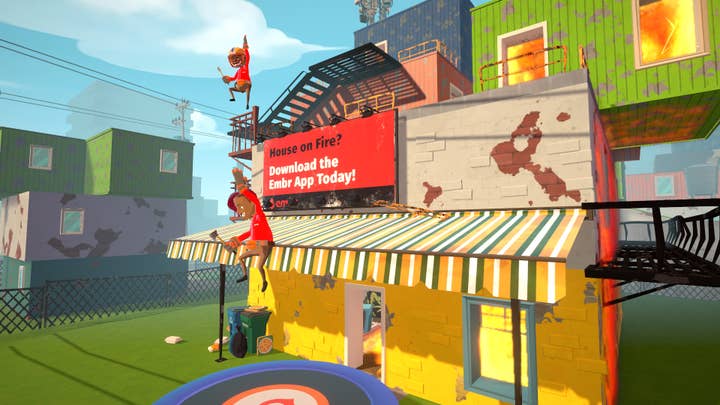
Rose points out that if you put your game at $10 rather than $20, you will indeed certainly sell more units. But that shouldn't be your focus.
"What you're doing there is focusing on the short-term rather than the long-term, because in a year's time when you're doing 40% off sales, your game at that point will be $6, which once it actually gets through to your bank account is $3 a copy.
"People focus too much on unit sales rather than the money they're making"Mike Rose, No More Robots
"Whereas, if your game is $20, you're making more like $8 a copy by the time it gets through to you. It just makes a massive difference. I think people focus too much on unit sales rather than the money they're making. It's easier to sell a bunch of copies on Steam at a lower price point, but a lot of time, it really doesn't work out in the long term. I see people selling their game for $5 and they get tens of thousands of sales and that's amazing, but then when you actually work out the numbers, they barely made anything because the price was so low."
Rose addressed this issue and related topics more in-depth in a report he published last year, entitled "How well are PC games selling in 2019?"
Going back to his diffusion of innovation concept, Schade explains that the late majority only buys your game when it's on a discount or in a bundle, which is why pricing needs to be taking these aspects into account from the get go. He shares the lifetime sales trajectory of Everspace, showing that the highest sale beats all correspond to a Steam sale.

"So [No.1] was the Early Access [launch], so it was pretty nice for an indie game. These [smaller beats between No.1 and No.2] are the 20% sales during Early Access. [No.2] is the full release. The biggest revenue by day was [No.5] where we had 67% off, which was $9.99. It was a front page feature, kicking off the Steam Summer Sale. So obviously the lower your price at the beginning, the less money you make while going through these deeper discounts.
"And of course you have to compare to your peer groups, but generally there's a lot of pressure on indies so they are afraid and tend to sell at a low price."
- Do some research on competitors
As Schade touched upon, comparing your game to your peers is crucial in finding a sweet spot for your price on Steam.
"One mistake some indies make is to price their game based on the amount of effort they have put in," founder of Grey Alien Games Jake Birkett says. "Instead, they should look at prices for comparable games in the same genre and use these as a guide."
"One mistake some indies make is to price their game based on the amount of effort they have put in"Jake Birkett, Grey Alien Games
Rose adds that the best thing to do is to find games on Steam that are as close to your game as possible.
"The fact is that, if your game does do well, then you are going to be appearing in the 'More like this' section on the bottom of their store pages," he says. "So players are going to be comparing prices there. If all the games that are doing well in a similar genre to your game are $20, then it's fair to say that you can probably charge $20 for your game."
While doing this research, you also need to consider the law of supply and demand, as well as the quality and replayability of your product compared to the competition.
"For me, the most important factors that determine the price is the quality, the demand for the game, as well as the time a player can spend in it and its replayability," says Pawel Miechowski, partnerships manager at 11 bit studios. "If the demand is high, too [high] a price can be tricky and too low won't leave space for proper discounts. I imagine people being suspicious about a $30 indie game but also unconvinced about a $20 AAA game. So the production value is an important factor too."
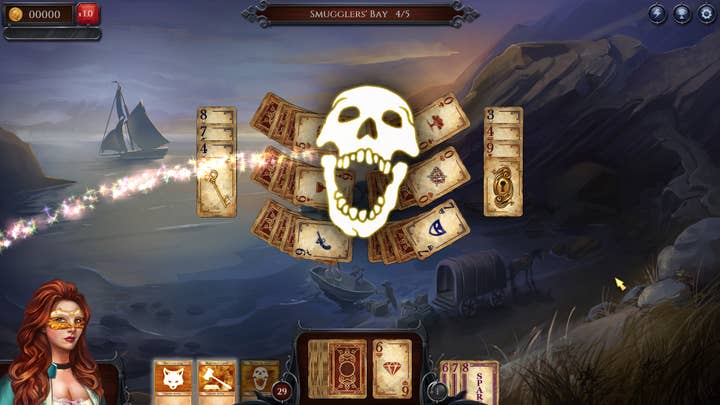
- Consider which tier your game falls into
Knowing when to cross the $20 barrier on Steam can be difficult. As highlighted by Miechowski, players may be weary of over-priced indies.
"I think once you get over $20, you have to start really thinking about it," Rose says. "$25 only really works if your game has a sort of AA feel to it and is less indie. But I think most titles that class as indie could get away with $20."
The definition of AA is a blurry one to say the least, and chances are you'll know whether you belong to that category quite clearly. But if you don't, Rose shares his perception of what a "AA feel" is.
"I think once you get over $20, you have to start really thinking about it"Mike Rose, No More Robots
"I like to take a game's trailer and imagine: if this was announced during E3, if this was up on the screen during the Xbox conference, would the average person watching just say the same comments that they would for all the other trailers or would it stick out like a sore thumb? Would people be like: 'Oh what's this indie shit?'
"I think if we put a Descenders trailer out during an E3 conference, that probably wouldn't stick out. It's 3D and I think people would feel like it looked good enough to be in with all the other games there.
"Whereas I think if we put Yes, Your Grace in there, we would get a lot of: 'Oh what's this indie shit' just because of the way it looks, the pixel art. That's why for example we've gone for $20 for Yes, Your Grace. I know that's a very rough definition but that's kind of what I try to imagine."
As a comparison, it's worth mentioning that Descenders had a $24.99 price tag at launch on Steam.
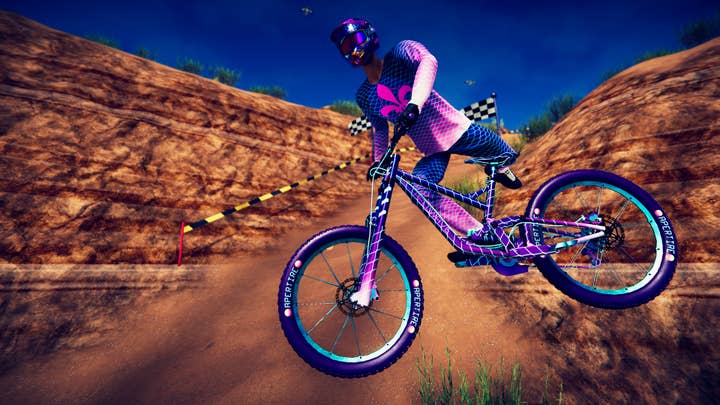
Byron adds: "There are established tiers like in any entertainment media, so it's all about predicting where your game will end up in terms of quality and playtime and ensuring that the full SRP will leave players feeling satisfied. If you're launching on PC only, you're free to set the price as you like, though games do cluster around the xx.99c mark."
It's worth noting that Steam doesn't have pricing restrictions, but other platforms may have standards to follow, Byron points out. So if you are launching on multiple systems you should work out the final SRP on those you're unable to set freely, and then apply it across all stores.
- Take your business model into account
Your game's business model needs to be clearly defined before you decide on a price for your game on Steam.
"It's best to make pricing and discount decisions while keeping the long term perception of the product in mind"Tom Giardino, Valve
"Before making any pricing decision, it's good to look ahead and map out all known product releases, updates, and other events, and then try to find opportunities to tie those into a discount or sale," Giardino says. "This is helpful for a few reasons. First, the goals and overall business model is a huge factor when making judgment calls such as pricing and discounts. For instance, a game that offers micro-transactions or DLC might benefit more from an influx of new players with a lower initial price (or no initial price).
"For traditionally priced games, there is always the challenge of marketing after the 'honeymoon of launch' wears off. Discounts can be helpful, but there's no shortage of discounted or free products available.
"Managing the 'horizon' of your product is worth keeping in mind. In just about every case, it's best to make pricing and discount decisions while keeping the customer and the long term perception of the product in mind."
- Consider localised prices
The GamesIndustry.biz Academy already highlighted the importance of localising your store page, but you also need to consider local markets for your price and adapt it accordingly.
"It is important to remember, when you make any sales estimation, that SRP in US dollars is one thing However -- especially on Steam -- you have to remember about regions with localised prices, like China," says Piotr Bajraszewski, senior business development manager at 11 bit studios. "ARPU coming from those regions may be even twice lower than the one from the Western countries."
You can read more pricing tips from Valve on this Steamworks documentation page.
How to make the most out of Steam sales
- Don't rely exclusively on seasonal sales
Now that you've priced your game sensibly, you can start thinking about the next step: how this price is going to evolve through Steam sales. The first thing to keep in mind is that seasonal sales are not the only option -- themed sales can also represent an opportunity, and you can reach out to Valve directly to make these happen.
"In terms of Steam's big seasonal sales, the process is pretty straightforward - Valve communicates the dates and publishers are free to set their own discounts," Byron says. "The key things to be aware of are 'cooling off' periods between launching a title and price promoting, but these restrictions are clearly outlined in the documentation. There are a number of other sales where the eligibility criteria is more narrow, but, again, Valve will reach out to those who can take part.
"[But] another approach can be to team up with publishers or developers of similar types of games -- in terms of genres, geography, events -- and suggest a themed sale directly to Valve. I've seen the frequency of these increase recently, and they can be a good way to create a 'moment' on store."

- Be progressive with your discounts
Once you've settled on participating in a sale on Steam, you need to be careful about how you approach your discount, and not reduce your price drastically, especially soon after launch.
"I'd recommend making small discounts at the beginning [of your game's cycle] and then step by step offer bigger promotions," Miechowski says. "Some customers are impatient and they want to buy the discounted game but won't wait until 50% promotion, so any kind of discount is satisfactory to them. So it's pretty logical to go slowly down with promotion and not shoot the big guns too early."
"I think deep discounting too quickly can really kill a game"Mike Rose, No More Robots
Rose points out that he's seen publishers discount games up to 40% only three months after launch, which he believes is a bad idea.
"It's good for the short term, because all the people who wishlisted it then are like: 'Holy shit, it's [discounted], let's grab it!' But I think in the long term, it's bad. It devalues your game. All our games are not just drawing sales years after they've come out, they are making a nice chunk of money for each of the devs we've worked with, on a daily basis. Not Tonight's been out for a year and a half now and I think the deepest discount we've done on it is 35%.
"I think deep discounting too quickly can really kill a game. So I would just say, during sales, you want to be thinking: Do I really need to heavily discount this year? We normally will go 10% off at launch and then 15% off in the first big sale."

Schade says Rockfish also works its way down with its discounts on Steam, as going too quickly doesn't send a good message to the fanbase and closes other doors for you.
"Our first sales [for Everspace] were 20% in the first year, during Early Access. With 20%, your early adopters won't be pissed. As an indie, if you start to discount your game too aggressively too soon, you're going to upset your biggest fans."
Birkett suggests to step down 5% per Steam sale at most, repeating the same discount twice or more, as discounting too much also has an impact on your reviews.
"The danger is that pricing too low will make your Steam user review score go down"Jake Birkett, Grey Alien Games
"The danger is that pricing too low will make your Steam user review score go down," he says. "These customers are less invested because they paid less and are more likely to leave unfavourable reviews."
Giardino does warn that Valve sees "diminishing returns on the same game running the same discount over and over." So be careful of being too repetitive.
- Aim to get featured
Being featured on Steam's home page during a sale is a guarantee to boost your sales. The store usually features a couple of titles as part of its daily deals for instance.
"The daily deal means you are featured one or two days," Schade says. "The second day depends on your performance. There's no contract, but if you have a contact [at Valve], they let you know: 'We will feature you on that day.' Then you put all your effort on this one day to drive the numbers really high and, if the numbers are good, you get a second day."
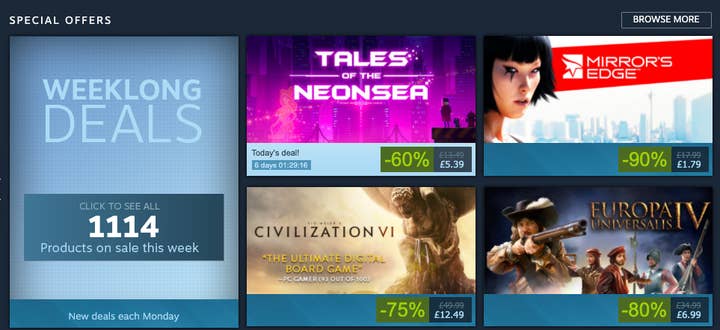
Byron adds that Steam provides developers and publishers with the tools to make their games successful themselves. But some aspects, including being featured on the home page, remain a mystery.
"I wish I understood the criteria with which Valve makes its featuring decisions -- I'd be a very rich man," he says. "But anecdotally, I see Steam choosing to feature games which have previously sold well, have converted their wishlist numbers well, or where there's wider interest being generated which will bring an audience into the store."
If you need advice on how to convert your wishlist numbers, you can read our Academy guide on the topic on this page. Having a Steam page that stands out can also help attract more visitors -- you can read our advice on the topic here.
Byron continues: "The important thing to remember about Steam is that it's a highly dynamic, algorithmic store. Sure, there are sections that are common to all -- top sellers, popular upcoming, etc. -- but the area above the fold can vary immensely user to user. It can make it difficult to see for yourself exactly where [your game] is being featured. So, while being one of the daily deals being highlighted right at the top is very important, you'll also be popping up elsewhere on store throughout the promotional period."
"The important thing to remember about Steam is that it's a highly dynamic, algorithmic store"Simon Byron, Curve Digital
- Do discounts at the beginning of the month
You may want to discount your game apart from Valve's big seasonal sales. If you do, keep in mind that discounts will always be more successful at the beginning of the month.
"I usually try to do sales at the beginning of the month simply because people have more money," Schade says. "It is a thing. The effect depends on the time and the competition, but we've seen a difference -- if you do a sale at the beginning of the month compared to the end of the month, [the difference] is roughly 10%."
- Time your updates around sales
Whether you're planning on releasing a quality of life patch or sizeable DLC, you should plan those launches around Steam's sale periods.
"When you release a new patch or a new content, [it] naturally increases the traffic on the game's page," Birkett says. "It also shows that your game is still being developed and it grows, so these are natural moments for promotions."

Byron adds that it also "offers newcomers confidence that they are joining the community of an actively developed and maintained game." Similarly, updating your store page around sales can also be a good idea.
"Refreshing your store art and text around a sale can combat artwork fatigue if you've been out for a while," Byron continues. "You'd be amazed at how much simply changing a base colour can help make your game stand out on the store. Aim for a lighter background colour so it stands out against Steam's dark shop window. "
- Consider bundling your game
Steam bundles are another way to discount your game that can be very valuable if done correctly.
"Steam is remarkably flexible when it comes to bundles, offering a huge amount of freedom for developers and publishers -- you can even easily team up with other companies to promote similar titles in one package," Byron says. "We've experimented with many types of bundles, and smaller collections work better than bigger ones due to the total cost being lower -- when have you ever, for example, dropped over £100 on a digital collection?
"Complete The Set bundles are interesting -- you can use these effectively as owner discounts, which we do see as valuable. The key thing to remember on Steam is that these bundle discounts stack, so if any of the base games included are on discount, the offering to the consumer is even more appealing."
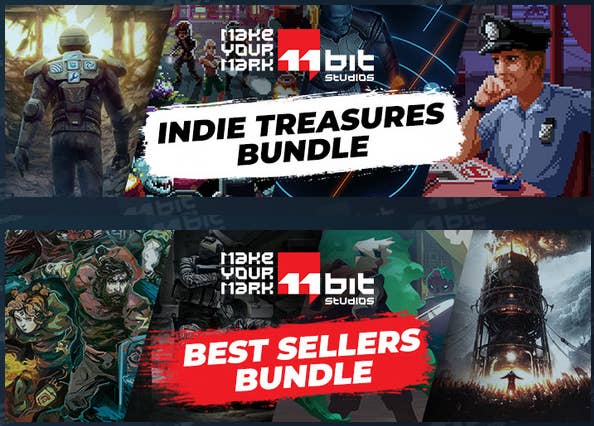
Bundling as part of a partnership with an external storefront is also worth considering and another reason to avoid discounting too deeply in the first place.
"If you go too aggressively into the high discount numbers, you minimise your chances to be part of a big bundle," Schade says. "Humble Bundle, Fanatical, Chrono GG, and all these others won't take your title if you diluted the value like crazy before. If you ran a couple of 90% sales then why put it in a bundle anymore? That's usually the price that you make in a bundle.
"What you have to do is you need to desync this with your sale because [Valve] wouldn't like it if you have a massive aggressive sale right before you hope to get featured on Steam. Because then it's bad for the Steam consumer. So if you do these super high discounts with Fanatic, Chrono and whatnot, always [do it] after you just did a Steam sale. This is for those guys who missed the Steam sale. It's only a day and it doesn't upset Steam."
"If you go too aggressively, you minimise your chances to be part of a big bundle"Michael Schade, Rockfish
- Find your sweet spot
Once your game has been out for a while, you'll be able to identify a sweet spot in terms of discount, which, taking the base price into consideration, will drive your unit sales without devaluing your title. Usually that sweet spot is somewhere between 70% to 85% off, Schade says.
"There is a sweet spot [before] you lose too much revenue per title -- for Everspace, at a $30 price point, it's around 75 to 80% off. It matters if you go below typical price points like $20 -- $19.99, $9.99 and so on. Because then you might pop up in other categories like 'Games below 10$' or 'Games below $5'."
Players often browse by discounts -- at the time of writing, 'Up to 80%' wasa category on Steam's Special Offers page -- or through the price point categories Schade just highlighted. But be careful: do not apply a drastic discount just to appear in these categories.
"Don't go lower than [85%] off," Schade advises. "We did 85% and now we're going back to 80%. We will most likely never do 85% for the base game [again], because the extra 5% doesn't change that much."

On top of finding the right discount level for your game, you also need to figure out what is the right rhythm for discounting. Knowing when you should and shouldn't offer your game on sale can be difficult.
"It's a delicate balancing act, but overall, you should discount as often as you are comfortable with," Byron says. "The market is so price sensitive that I believe an active approach to discounting yields the best results. Steam offers a really valuable way to track Wishlist conversions over the lifecycle, even suggesting how your title is converting from Wishlists to sales compared to an 'average' game. This is an enormously valuable piece of data -- if you're not converting as much as the average, then that suggests your discount strategy isn't quite right. Post-launch wishlisters are basically flirting with you, signalling they're interested, but not at the current price.
"Don't be scared of discounts... I do see some publishers and developers being very cautious in terms discounting -- leave it too long and there's a chance that those waiting for the opportunity to buy at a price they deem fair will have lost interest, losing you potential sales."
"Nobody does a better job in promoting your game to people who don't own it yet than Steam"Michael Schade, Rockfish
- Keep track of everything
To figure things out, whether that's your ideal discount or how often you should be discounting, it's crucial that you monitor your game's performance over time. Keeping track of everything will help you to identify what works best for your specific game.
"It's good to think about the long-term earning potential and price perception of your game when making discount decisions," Giardino says. "Monitoring wishlist conversions during sales and after price reductions is a good way to measure the value of pricing changes."
Schade tracks every single detail related to Everspace, including everything happening on its Steam page during sales, such as traffic, click through rates, impressions, conversions, and so on.
"[Traffic] is categorised by either it's coming directly from the Steam home page, which means you were featured, and 'Steam organic', which is when somebody searches for it or you pop up in some [articles] or whatnot," he explains. "Then the second most important thing is obviously the wishlist -- how much traffic is generated by the wishlist also has a big impact. Then I compare this on a year-to-year basis.
"You don't get this kind of data from any other store. Nobody does a better job in promoting, showing your game to people who don't own it yet, than Steam."
You can read all our Steam guides on this page, covering everything you need to know about publishing on Valve's platform, direct from established developers and Valve itself. Our articles about how to make money from video games also cover a wide array of topics, including how to create a successful Patreon or tips from Ian Livingstone to make sure you're investor-ready. You can read all our guides about sellling games on this page.
